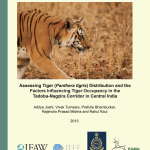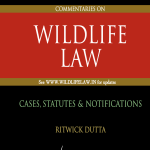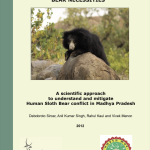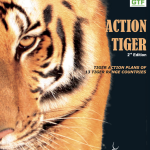Project Info
Project Description
There is much more to India’s wildlife than the widely-talked-about flagship species like the tiger, the rhino or the elephant. While conservation efforts dedicated to these flagship species trickle down benefits to other species that share their habitat, certain species require more than just these indirect interventions for survival.
The wild buffalo (Bubalus arnee) population of Central India is one such example whose local existence is gravely threatened. Once found in abundance across northeast India extending to northern and central India, the species now has its last bastions in some pockets in northeast India and Chhattisgarh in central India.
The species is listed in Schedule I of the Indian Wild Life (Protection) Act, 1972. With less than 4000 individuals (IUCN, 2016) estimated to be remaining in the wild, it is also classified as ‘endangered’ in the IUCN Red List of Threatened Species. Notably, India holds over 80% of the endangered wild buffalo population, mainly in two disconnected clusters: northeast and central India. While Assam hosts most of India’s wild buffaloes across various protected areas, their numbers have sharply declined in central India.
At the brink of extinction
In 2005, the Wildlife Trust of India (WTI) partnered with the Chhattisgarh Forest Department to assess and conserve the state’s wild buffalo population. The evaluation revealed that the population in Udanti Wildlife Sanctuary was critically low, and locally extinct in other areas. With security issues in Indravati, the remaining buffaloes in Udanti became the focus of recovery efforts. A state-wide survey also found that Central India’s wild buffalo population is concentrated in Chhattisgarh, with 39-47 individuals in Indravati, Udanti, and Pamed, but extirpated from Bhairamgarh. Maharashtra’s Sinroacha Forest Division has about 20 individuals, while no evidence of the species was found in Odisha. To conserve the species, threats in the three key protected areas in Chhattisgarh—Indravati, Pamed, and Udanti WLS, and small pockets of habitats in Maharashtra must be addressed, with efforts focused on expanding their range and abundance. However, left-wing extremism has hindered conservation efforts in parts of southern Chhattisgarh and neighbouring Maharashtra.
Thus, Udanti-Sitanadi Tiger Reserve (USTR) remains a crucial area for the recovery of wild buffalo in central India. The population faces threats from habitat degradation, hunting, low population size and low sensitization and awareness levels among various stakeholders.

Asiatic wild buffalo are a record-breaking species – their horns spread up to 2m, exceeding in size the horns of any other living bovid | Photo by RP Mishra /WTI
Bringing back from the brink of extinction
The project aims to recover the wild buffalo population of central India. Currently, the project is implementing several ex-situ and in-situ interventions in Udanti-Sitanadi Tiger Reserve, Chhattisgarh in collaboration with the Forest Department.
WTI in collaboration with the forest department spearheaded the development of a five-year Action Plan, using a multi-pronged approach to ensure their survival and recovery. The Action Plan, which was subsequently approved by the governing council of the project, was comprised of three basic objectives:
1. Ensuring zero unnatural deaths of the remaining individuals.
2. Habitat improvement
3. Population augmentation by re-stocking (especially females) from closely related populations or conservation breeding.
 To create a sense of ownership towards the project among local communities, tribesmen are employed as animal keepers and trackers | Photo by Pranav Capila
To create a sense of ownership towards the project among local communities, tribesmen are employed as animal keepers and trackers | Photo by Pranav Capila
Outreach and sensitisation
The species was adopted as the State Animal of Chhattisgarh in 2001 but lacked popularity and public awareness. WTI addressed this through targeted campaigns, starting with a survey to gauge local awareness and pride in the species. The survey revealed low popularity and a lack of awareness about the buffalo’s declining numbers. To address this, WTI effectively implemented various outreach strategies, including introducing a wild buffalo mascot, creating wall paintings, and engaging the community with street plays, competitions, and rallies. These efforts, especially aimed at younger audiences, have successfully improved public attitudes and fostered a sense of pride in the wild buffalo as a symbol of Chhattisgarh.
A WTI survey estimated not more than 50 individuals across in Indravati National Park, and Pamed and Udanti Wildlife Sanctuaries in Chhattisgarh.
Conservation breeding
A key initiative of the project is the in-situ conservation of wild buffaloes. Following the assessment of the Udanti wild buffalo population, the last standing female and her male calf were homed in a secured boma within USTR. The male calf was later released into the wild, and the female also birthed a healthy female calf in boma, unfortunately, we lost both of the latter prematurely. Currently, the USTR population is represented only by seven pure-bred males and a few hybrids.
Hybridization poses a significant threat to the genetic integrity of the remaining wild buffaloes in USTR. As outlined in the Action Plan, the population requires re-stocking to prevent local extinction. Although the Indravati population would be the ideal source, it remains inaccessible. Therefore, wild buffaloes from Assam were translocated for conservation breeding, led by WTI in collaboration with the Forest Department. These buffaloes are currently housed and maintained in captivity to initiate conservation breeding in ongoing years.
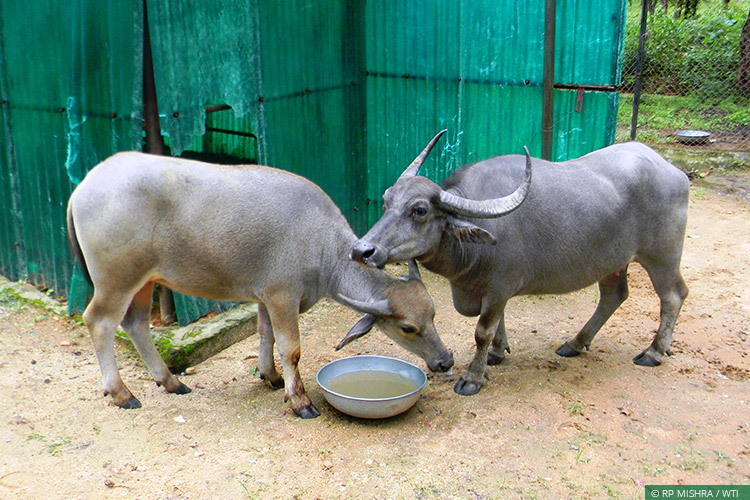 Asha (right) and her calf Kiran, probably the only two female wild buffaloes in the central Indian population | RP Mishra/WTI
Asha (right) and her calf Kiran, probably the only two female wild buffaloes in the central Indian population | RP Mishra/WTI
Reducing threats to wild buffaloes
The fringe villages of USTR are agriculture-dependent and often face crop raiding by the wild buffaloes causing human-wildlife conflict situations, especially due to hybrid buffaloes. WTI actively facilitates the convergence of forest department crop damage compensation schemes and conducts yearly livestock vaccinations to reduce transmission of zoonotic diseases. In the course of the project, actions have also been taken initiatives to improve the prevailing habitats and reduce any direct threat to the population through multi-faceted interventions such as water hole creation, de-weeding, strengthening protection of population and habitat through training and patrolling, reducing pressure from fire-wood collection, etc.
PARTNERS: Chhattisgarh Forest Department
PROJECT LEAD: Dr. Rajendra Prasad Mishra






